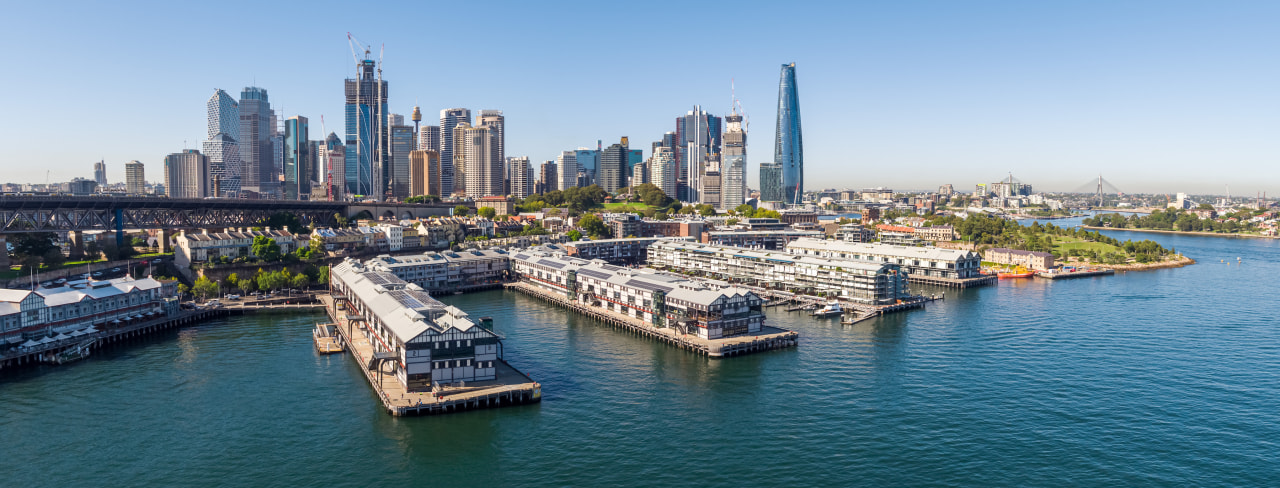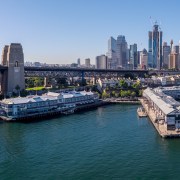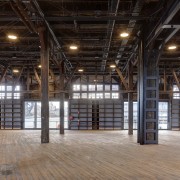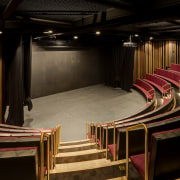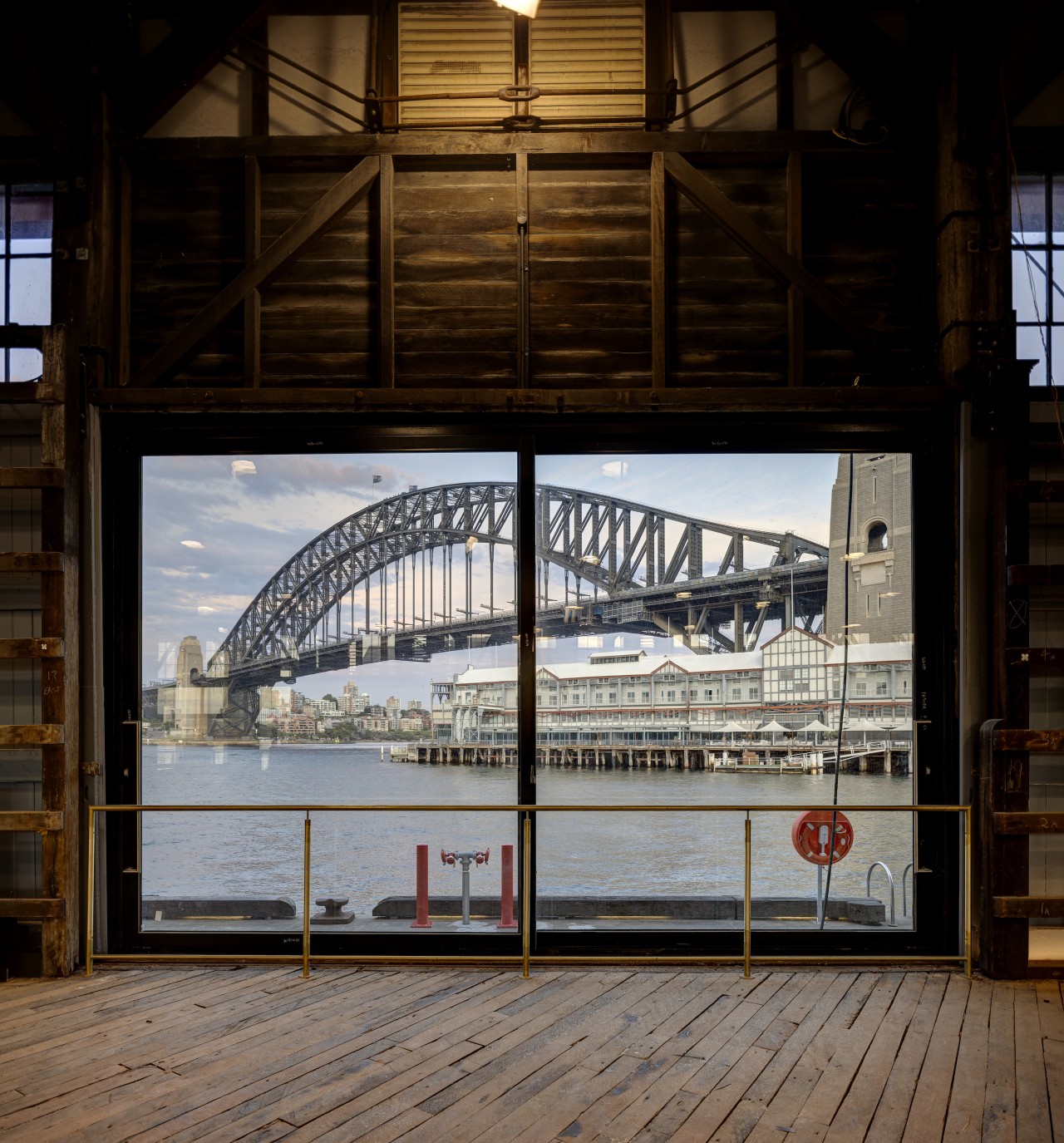Performing arts take the stage at reinvented Sydney wharf
Major redevelopment of wharfs at Sydney's Walsh Bay Precinct by TZG receives top honours in architecture awards – work included structural strengthening and state-of-the-art acoustic solutions and fit-outs
Designed by Tonkin Zulaikha Greer Architects (TZG)
After recently opening to the public, major redevelopment works on the historically significant Pier 2/3 and Wharf 4/5 at Sydney's Walsh Bay Arts Precinct has picked up a number of architectural awards, including the state’s top award, the NSW Architecture Medallion.
The Precinct also recently won in the Adaptive Reuse category at the National Trust Heritage Awards 2022.
Walsh Bay Arts Precinct is located on the Sydney Harbour foreshore and is now a premier arts and culture hub, home to nine of the nation’s foremost performing arts companies.
Former cargo wharves built between 1913 and 1920, Wharf 4/5 and Pier 2/3 are an integral part of Sydney’s history and now feature a heritage-sensitive design by Tonkin Zulaikha Greer Architects (TZG), undertaken by Richard Crookes Constructions.
As the northern most operational pier at Walsh Bay, Pier 2/3 was a key ‘open berth’ location for passenger cargo ships and, following the Second World War, functioned as a migrant arrival point for new families starting their lives in New South Wales.
TZG’s scope included the adaptive re-use of Pier 2/3 providing new arts facilities including a 200-seat and a 450-seat theatre, rehearsal rooms, studios, production spaces, associated office space, bars and cafes; a large heritage commercial events/art space to support a wide range of commercial and artistic events.
Additional aspects are the refurbishment of the ground floor arts facilities of Wharf 4/5 and its associated shore sheds; new commercial retail opportunities; and creation of a major waterfront public square to become an innovative external platform for collaborative performances, festivals, public art, cafés, restaurants, commercial and community activities.
On the announcement of the awards, Peter Tonkin, director of Tonkin Zulaikha Greer Architects, acknowledged the many inspiring people that have worked on all aspects of the project.
“It has been a genuine privilege working on the robust and beautiful twentieth-century buildings at Walsh Bay, a visionary industrial project originally created for the benefit of the public, and to see it now grown into a different and even more focal public role,” says Tonkin.
Walsh Bay Arts Precinct has become a vibrant urban and tourist destination and that adds to Sydney’s reputation as a global cultural capital.
The redevelopment more than doubles the arts and cultural offerings at Walsh Bay, but it will remain a working arts precinct – with performance, rehearsal, workshop, production and support spaces; and with complementary commercial opportunities.
The project rejuvenates a vital piece of Sydney’s waterfront cultural heritage by opening up a forgotten and under-utilised pier for the public to engage with arts and culture, and to experience the heritage maritime character of the pier.
Innovations in construction
Working over water on an over 100-year-old pier presented unique challenges which were overcome in a variety of ways.
The majority of essential services have been fed from a central plant room in the Wharf 4/5 Shore Sheds.
Services were installed from a boat, under the wharf in special trays and pipes for proximity to the sea.
Strict load limits on the old timber structure meant that deliveries had to be broken down into multiple small loads and barges were used to deliver important features such as whole lift shafts and the 21-tonne shared foyer stairway.
The old timber members required extensive rectification including the replacement of 24 storey posts, new steel piles, strengthening or replacement of deteriorated beams and joists and the shifting of existing piles, all while the building remained a live construction site.
Acoustic solutions:
Constructing within a 100-year-old timber pier on Sydney Harbour meant that acoustic solutions had to be well-planned and constructed.
A solid steel plate floor was installed in the ACO auditorium, instead of the more traditional concrete slab floor, to meet height restrictions while maintaining the mass required for low frequency acoustic performance.
All walls, ceilings and equipment in the theatre and rehearsal spaces were installed on acoustic mounts, reducing the impact of vibrations through the structure from passing harbour traffic and other activities in the precinct.
Bespoke acoustic timber cladding has been installed in all performance and rehearsal spaces, not only achieving acoustic outcomes but adding to the interior design.
The ACO Performance space is fitted with a state-of-the-art Yamaha Active Architecture System, called Active Field Control (AFC) Enhance, creating a full sound experience within this space
State-of-the-art facilities:
Construction challenges were turned around to deliver highly specified facilities with innovative features.
Large sections of the roof in the central valleys were raised to facilitate more room for lighting and sound equipment inside the ACO and ATYP performance spaces, increasing the usable space.
The roof was also raised in common areas to allow space to install the major equipment for services including air-conditioning and water heating.
To lessen the extent of exposed ductwork on the roof, large open air rooms were constructed in the major plant rooms with custom perforated roof sheets to match the existing roof profile and colour to allow air in to and out of the building for air conditioning.
Retractable seating banks have been installed in the ACO and Bell Shakespeare performance spaces to allow for multiple seating configurations for flexibility in performances.
The design has considered the operational needs of theatre staff.
Within the ATYP theatre a wire mesh ‘floor’ has been installed above the performance space to allow complex rigging and lighting setups and improve safety.
Heritage and sustainability
The heritage value was carefully protected during construction with substantial remedial works undertaken to repair the heritage structures.
Richard Crookes Constructions worked with Tropman and Tropman to identify heritage items to retain – prior to internal works, items were carefully labelled and tagged for retention.
Some of the surplus hardwood floorboards were recycled into joinery units in common spaces and used by tenants.
Over 230 heritage light fittings were refurbished and reused throughout the pier.
The heritage nature of the pier was honoured as much as possible in the large event area, ensuring any new installations reflect the previous industrial use of the wharf.
Being over water has allowed the installation of a seawater cooling system for air conditioning services, rather than a traditional rooftop air-conditioning unit.
This system reduces power usage and noise levels, while maintaining the visual impact of the building.
Nearly 300 state-of the-art solar panels have been installed on the roof, making it a more sustainable precinct.
Credit list
Project
Construction
Awards
Redevelopment architect
Heritage recognition
Designed by: Designed by Tonkin Zulaikha Greer Architects (TZG)
Story by: Trendsideas
Photography by: Brett Boardman unless individually credited
Home kitchen bathroom commercial design
Diving into nature
Classic looks, contemporary efficiency
Personality plus
